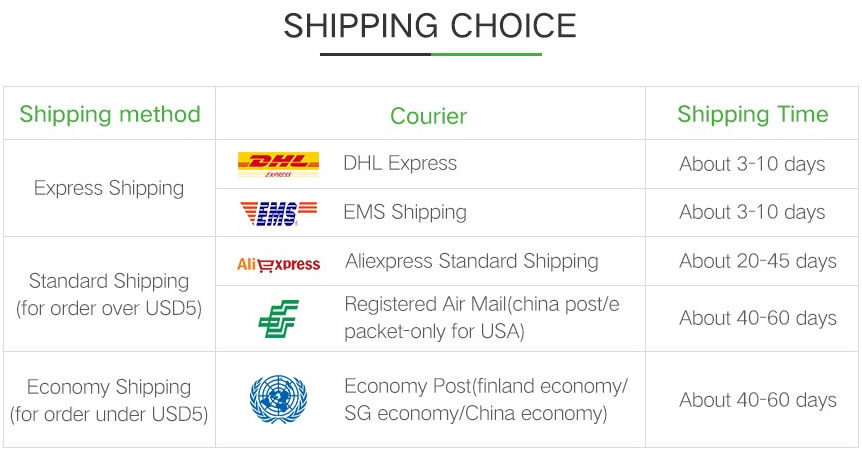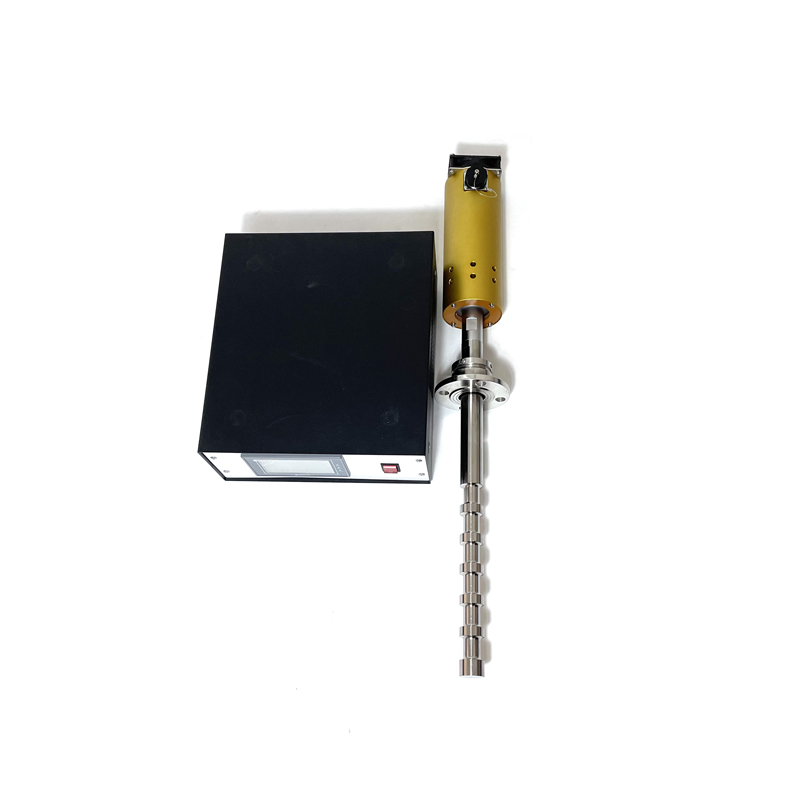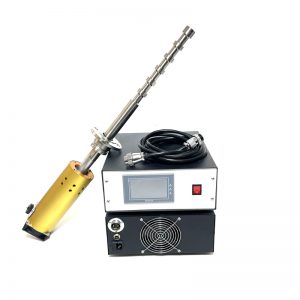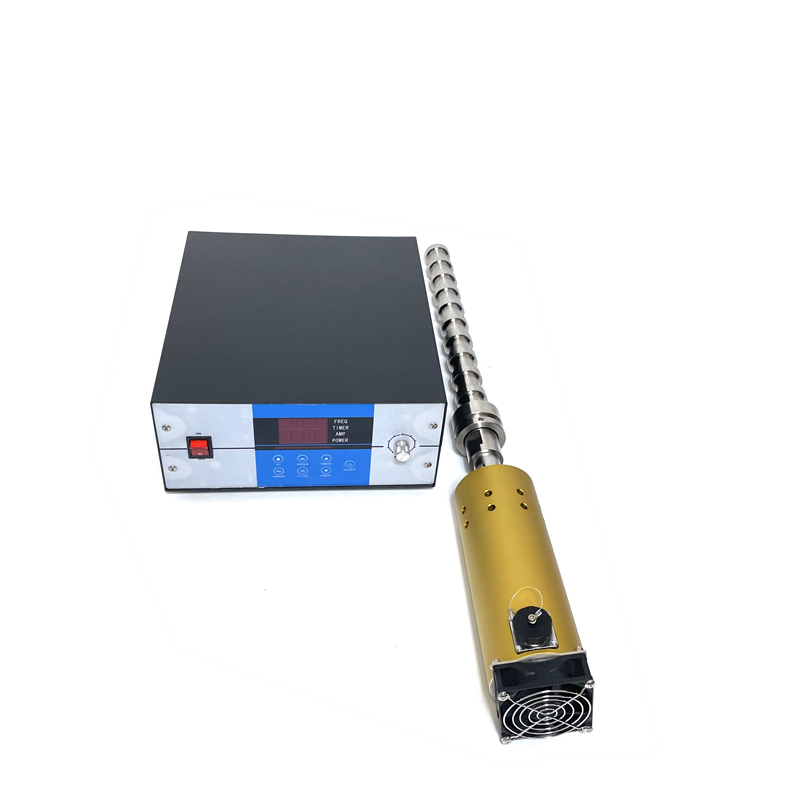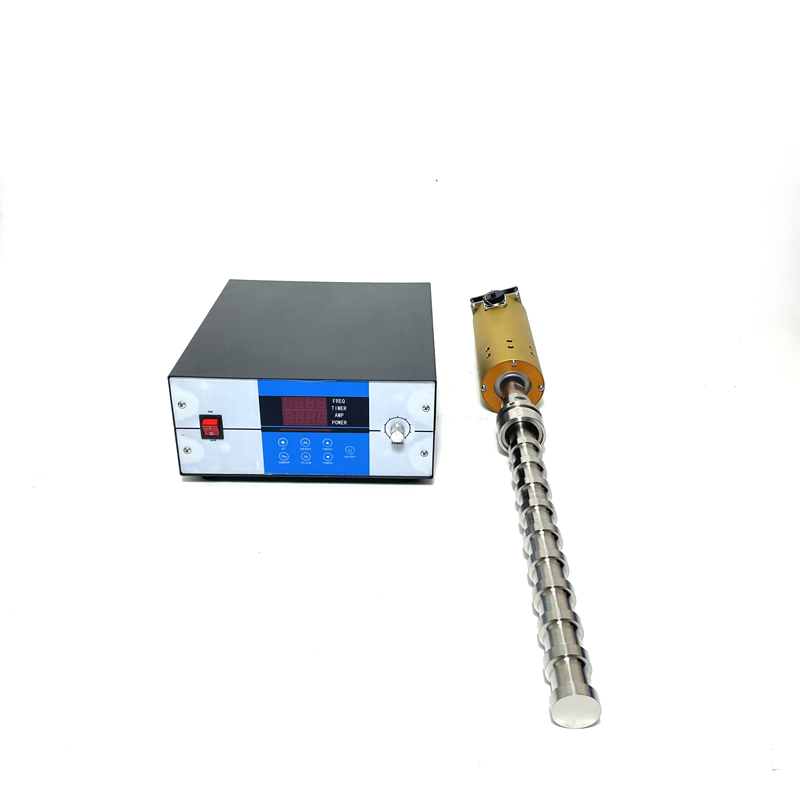 Cavitation effect of ultrasonic vibration rod:
Cavitation effect of ultrasonic vibration rod:
In some cases, the generation of ultrasonic effects is related to the cavitation mechanism. Acoustic cavitation refers to a series of dynamic processes that occur in small bubbles (holes) in liquids under the action of sound waves: oscillation, expansion, contraction, and even collapse. At the point of cavitation, the local state of the liquid undergoes significant changes, resulting in extreme high temperatures and pressures.
Components:
① Ultrasonic transducer ② Ultrasonic amplitude lever ③ Ultrasonic tool head ④ Ultrasonic driving power supply. Its manifestation is that the transducer moves back and forth in the longitudinal direction, with an amplitude typically of a few micrometers. This amplitude power density is not sufficient and cannot be directly used. The amplitude transformer amplifies the amplitude according to the design requirements, isolates the reaction solution and transducer, and also serves to fix the entire ultrasonic vibration system. The tool head is connected to a variable amplitude rod, which transmits ultrasonic energy vibration to the tool head, which then emits the ultrasonic energy into the chemical reaction liquid.
|
管材設備
類型
|
管式感測器
類型
|
頻率
(千 赫)
|
超聲波
輸出(W)
|
總長度
(毫米)
|
直徑
(毫米)
|
靜態容量
(pF±10%)
|
|
PU-UE1 系列
|
美國 61
|
15-28
|
1000
|
500
|
Φ50-55
|
68000
|
|
PU-UE5 系列
|
美國 25
|
15-28
|
1500
|
850
|
Φ50-55
|
68000
|
|
PU-UE6 系列
|
美國-16
|
15-28
|
2000
|
1100
|
Φ50-55
|
132000
|
 超聲波換能器,超聲波發生器,超聲波清洗機 -SKSONIC
超聲波換能器,超聲波發生器,超聲波清洗機 -SKSONIC
